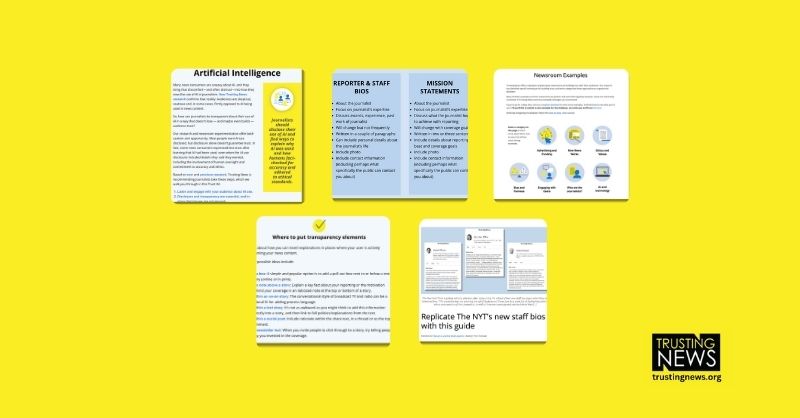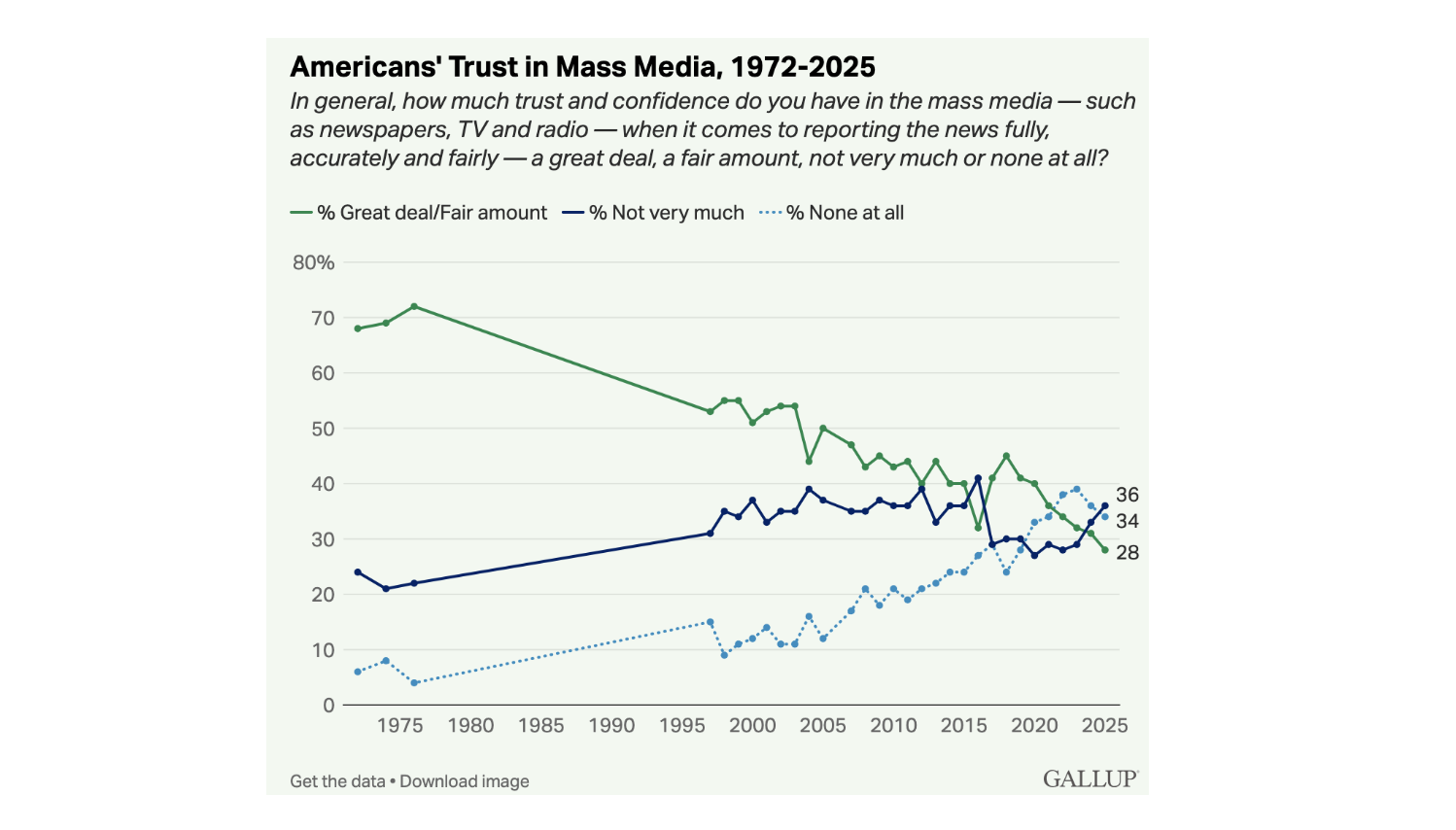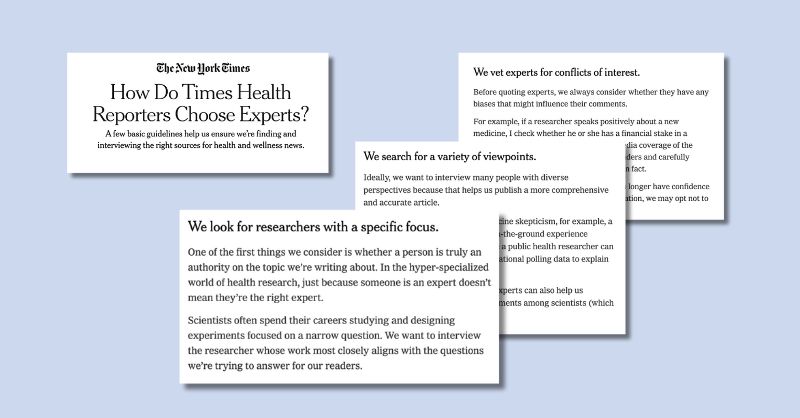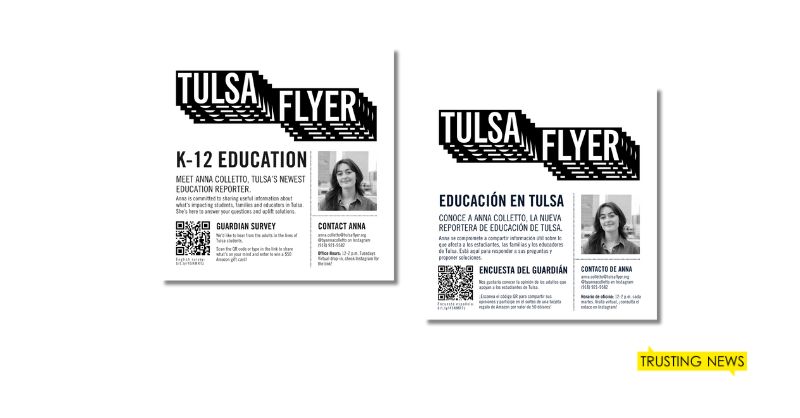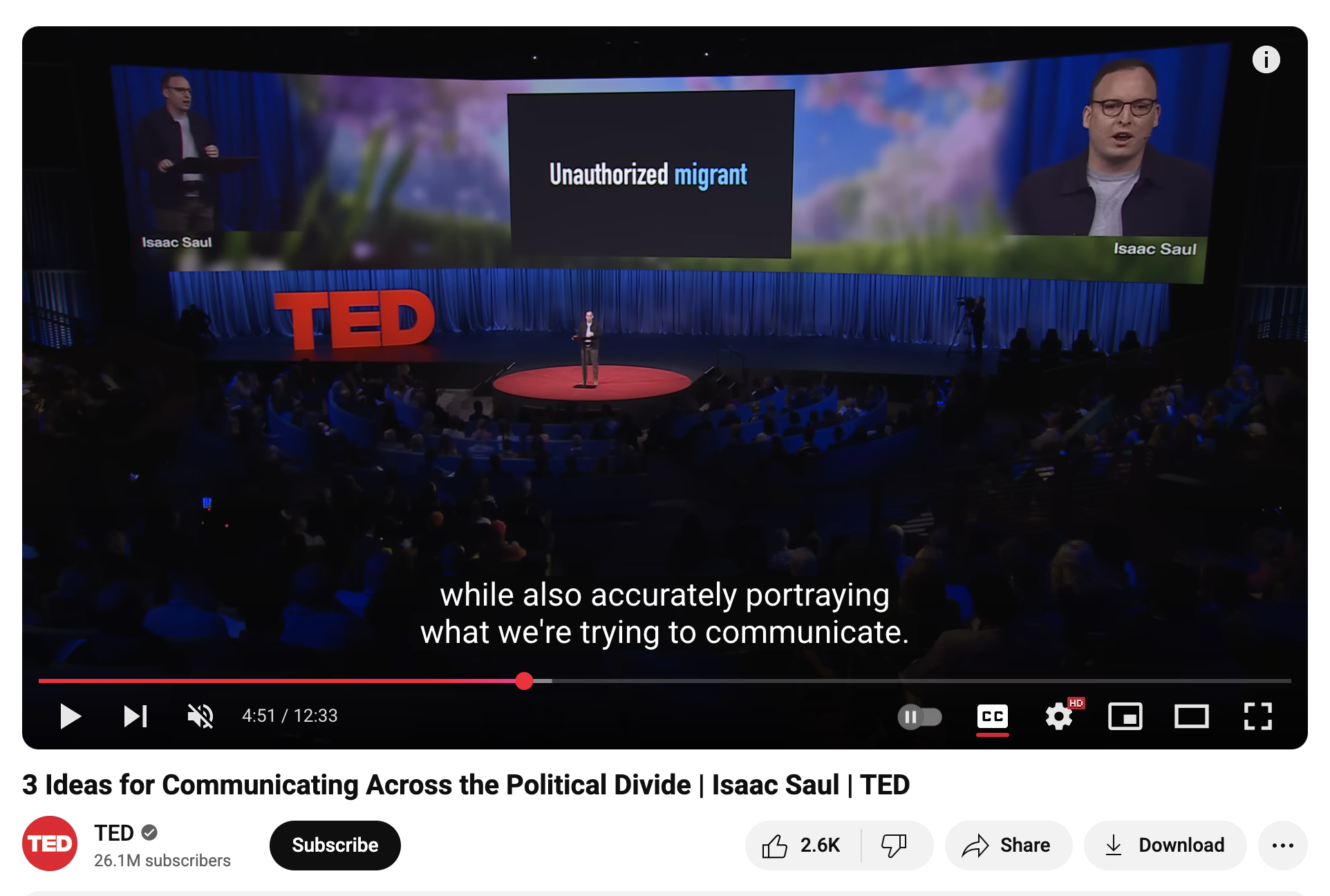
This weekly Trust Tips newsletter shares quick, actionable tips for how journalists can earn and sustain trust. Subscribe to get it in your inbox at trustingnews.org/newsletter.
Rethink some word choices to be more hearable
Want to get this Trust Tips newsletter in your inbox each Tuesday? Subscribe here.
At a recent training I attended, a journalist shared that they had faced pushback after using the term undocumented immigrant in their coverage. To some people, the use of this term signaled bias.
While this isn’t all that surprising, it does underscore the weight behind journalists’ language choices.
We know from research that journalists’ language and framing can convey a sense of where they are coming from and how they feel about the sources and ideas presented in their stories. People said factors like simple word choices can make coverage feel polarizing and turn them off before they even engage with the story.
That’s why we frequently encourage journalists to be mindful about how their language will land with different audiences.
The end goal isn’t to appease everyone. That’s not reasonable. (I’m also not suggesting you stop using the term undocumented immigrant. More on this below.) But as journalists, we can make our coverage less polarizing by being more mindful about our language — and then explaining our decisions to our audience.
Here are two examples that highlight how journalists are doing this.
Tangle’s use of ‘unauthorized migrant’
The team at Tangle News, a daily newsletter aimed at reaching people across the political spectrum, is really thoughtful about how language plays a role in polarization.
Here’s an example: Noting that neither the term undocumented migrant nor illegal alien felt neutral to their wide audience, the team opted to use a third, legal term: Unauthorized migrant.
Founder Isaac Saul said in a TED Talk that the term (which is not standard AP Style) is an “expression that seems not to offend the sensibilities of either side, instead allowing readers to take in the arguments we’re presenting while also accurately portraying what we’re trying to communicate.”
What’s great about this is the outlet is transparent about their thought process and decisions with their audience. The team published an editorial policy where they explain the thinking behind the decision, as well as other specific language choices around race, gender and abortion.
At Trusting News, we’re not in the business of telling you which language will be best for you to use. It will likely depend on your area and who your audience is. But whatever you decide, it is important for you to get internally consistent about it in your coverage, and then explain that to your audience. Remember, people won’t assume we’re trying to make thoughtful, careful decisions unless we tell them.
Dallas Morning News avoids ‘expert’
Katrice Hardy, who recently moved from executive editor of the Dallas Morning News to CEO at The Marshall Project, shared in a recent Poynter webinar how the Dallas Morning News is careful to avoid labels like “expert”.
Hardy noted that just because journalists feel like someone is an expert, it’s ultimately subjective. And it is applied to some types of expertise more than others — favoring expertise like education over expertise developed more experientially. It is natural that readers might disagree or wonder why the person was tapped as a source. Instead, Hardy encourages reporters to list out the person’s credentials.
While journalists tend to want to be concise and efficient in their writing, we’ve found that using more descriptors might be more accurate than relying on one label. This is especially true when using labels or terms that mean different things to different people — such as conservative, Christian Nationalist or even expert. We can tell a more complete, accurate story by getting more specific.
3 steps to help check your langauge
Looking to be more mindful of the language you’re using? Start by asking yourself these three questions.
- Examine your adjectives. Specifically, look at how you describe groups, actions and points of view. Are they necessary? Also, check your adverbs and verbs. They can imply we know the actor’s intent and communicate what we think about their actions.
- Examine your perspective. Are there words used to describe the issues or positions that reflect the preferences or norms of one group? If so, is that intentional?
- Examine your tone. Is there playful or snarky language that makes light of an issue, or could potentially be perceived as biased?
We also have two resources to help.
- Word Choice Guide. With the help of partner journalists, we’ve gathered feedback from different audiences and created this list of potentially polarizing words and phrases journalists should be cautious with in political coverage.
- Anti-Polarization Checklist. This checklist is designed to insert a pause button in your reporting, giving you steps to assess how your coverage is viewed across the political spectrum.
What words are you rethinking?
We’d love to know what words you’re rethinking or wondering about.
Have things come up in your coverage or in discussion with your newsroom? Let us know by replying to this email!
What does ‘democracy’ mean?
Journalists use the term democracy a lot. We talk about how democracy is under threat and how we’re working to safeguard it. We try to hold public officials accountable for protecting it.
But research shows the term “democracy” is interpreted differently by groups of people, and it might play into polarization rather than being universally understood. Rather than drawing attention to something we think is crucial for the public to be discussing, it might send a signal that the journalism is coming from a place of alliance with liberal terminology and causes.
Unfortunately, researchers we’ve been talking to agree that when journalists use language like “supporting democracy,” people on the right are sometimes hearing that as code for anti-Trump views. That’s frustrating, and as journalists, we can wish it weren’t true. But fundamentally, journalists need to care how their work is perceived.
So with that in mind, we have a lot of curiosity about how journalists can cover democracy well. We’re eager to explore more and are asking questions like:
- How should journalists talk about what it means to support or uphold democracy?
- How can journalists talk about their role in a functioning democracy?
- How can journalists effectively point out where we as a society or community are falling short of democratic ideals, in a way that is hearable across the political spectrum?
If this piques your interest — either as a journalist wanting to discuss, or a researcher or funder interested in helping us further explore this work — reach out to us by replying to this email! We’d love to connect.
At Trusting News, we learn how people decide what news to trust and turn that knowledge into actionable strategies for journalists. We train and empower journalists to take responsibility for demonstrating credibility and actively earning trust through transparency and engagement. Learn more about our work, vision and team. Subscribe to our Trust Tips newsletter. Follow us on Twitter, BlueSky and LinkedIn.

Project manager Mollie Muchna (she/her) has spent the last 10 years working in audience and engagement journalism in local newsrooms across the Southwest. She lives in Tucson, Arizona, where she is also an adjunct professor at the University of Arizona’s School of Journalism. She can be reached at mollie@trustingnews.org and on Twitter @molliemuchna.
